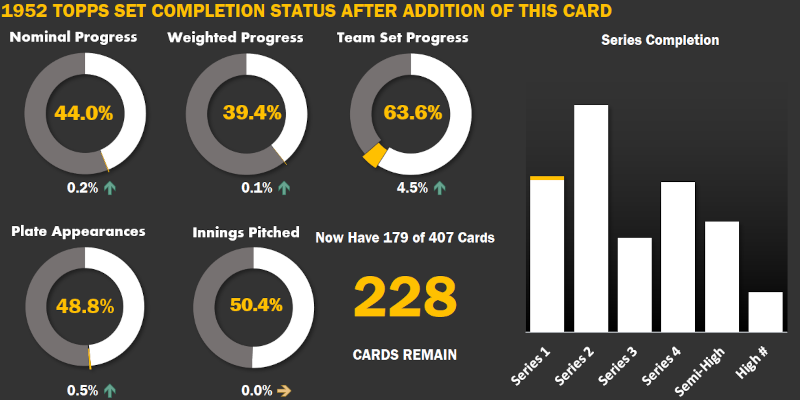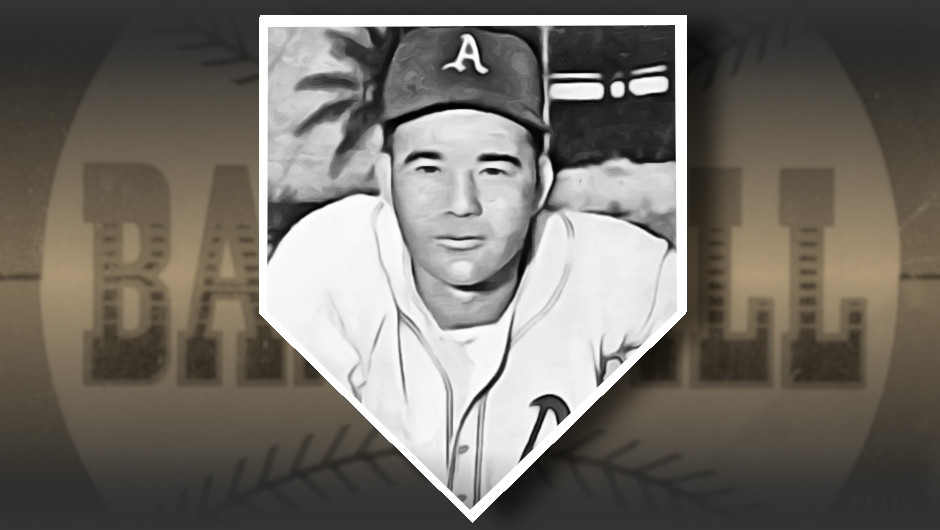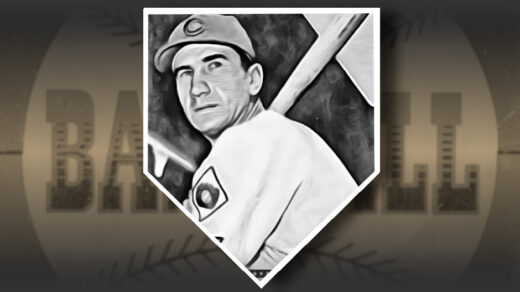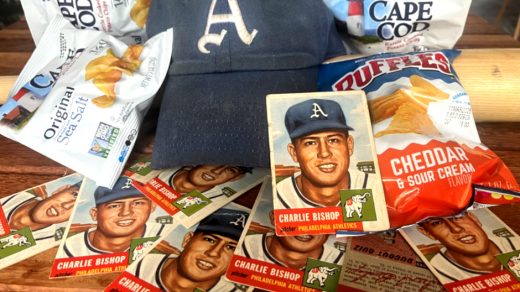What if Billy Martin had an alter ego that was a fantastic hitter? That would be the alliteratively named Ferris Fain. And boy, could this guy beat opposing pitchers.
Fain appears in the first series of the 1952 Topps set as the reigning American League batting champion and would repeat the title again in ’52. In 1951 he batted .344 and managed to strike out only 20 times across the entire season. The year prior to winning his first title, Fain struck out 26 times while drawing 133 walks. The only other players to hit a triple digit walk:strikeout ratio are Eddie Stanky, Barry Bonds, and Ted Williams. This wasn’t a one-time event for Fain, whose high walk rate contributed to him posting the highest on-base percentage (.431) of the 1950s of any player not named Ted Williams. Five All-Star selections arrived in quick order.
Fain’s secret weapon was the ability to draw walks and hit the ball all over the field. He has the highest walk rate of any player appearing in the ’52 Topps checklist and carries the highest modern era single-season walk rate aside from Barry Bonds. The result is a career .390 weighted on base average, in line with what was produced decades later by Vlad Guerrero and Mike Piazza. Fain managed to show good power production with his bat despite averaging less than 7 home runs per 162 games played.

Transformation From Billy Martin to Walter White
The allusion to Billy Martin was purposely made as a device for introducing Fain. The pair shared many personality traits and had a commanding understanding of baseball strategy. Like Martin, Fain was a hard drinker and eager brawler. Fain carried with him a combative view of the world, often finding himself at odds with those around him. The combination of alcohol and a short temper led to all sorts of problems, including injuries sustained in bar fights that curtailed several of his seasons. Recurring injuries forced him out of the game.
Faced with the end of his baseball career, Fain moved on to other pursuits. A West Coast native, he grew skilled in construction trades and became involved in the running of an Alaskan lumber mill. Somewhere along the way the abrasive man with the alliterative name morphed from Ferris Fain into Breaking Bad’s Walter White. Fain was arrested in 1985 and sentenced to house arrest and probation for growing marijuana. He seemed to have a contradictory stance on the subject, generally being against its use but eagerly flaunting any prohibition imposed on him by others. Three years later Fain had expanded his operation. He was arrested after being found with several hundred plants, quantities of finished product, and detailed records of what amounted to being a thriving drug dealer. Fain served a year and a half in a California penitentiary.
One 1952 Mystery Solved and Another Discovered
The addition of Fain to my ’52 Topps set building project brought an answer to a question I had been pondering for some time. Among the Philadelphia Athletics cards, why are so many players pictured with pink undershirts visible beneath their jerseys? Each card features a colorized photograph that started out as a black & white image. Someone had to consciously add the pink hue to the shirts and did so only with members of one team.
Looking at all the A’s cards in the checklist I see a clue. The cards of Fain, Morrie Martin, and Eddie Joost all show players wearing uniforms with long sleeve red shirts underneath their jerseys. Bobby Shantz and Hank Majeski are shown in similar uniforms, though their sleeves are blue. Philadelphia’s uniforms may have sported some variation of red, white, and blue and the color artists employed on the Topps contract reflected it in their work. The Fain card shown below splits the difference by combining a visibly red long sleeve shirt with a white neckline. The pink undershirt visible on some Zernial and Majeski cards may be an artifact of this coloring assumption.
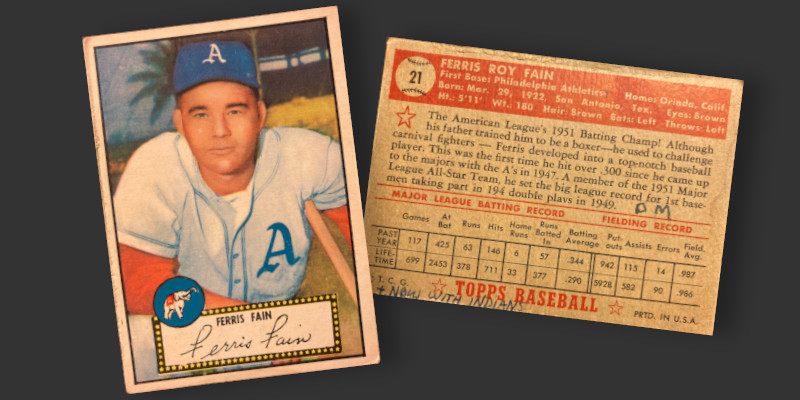
I picked up this card online from a seller bundling together purchases of common cards into a single shipping charge. It looks great from the front, perhaps earning a grade of very good from that perspective. Upon turning the card over there are a couple issues. There is some faint staining along the right side and evidence along the top border that the card had once been part of a stack rubber banded together.
There’s probably a story behind those imperfections, but it is the writing on the back that really grabs my attention. Someone wrote the initials “DM” at the end of the card’s biographical text. My guess is these are the initials of a kid who did not want his cards getting mixed up with a sibling’s or schoolyard friends. DM presumably added an addendum to the bottom of the card, noting that Fain was now playing for the Cleveland Indians.

This is particularly interesting, as Fain did not join Cleveland until his final season in 1955. That season he played in only 56 games as a temporary replacement for polio-stricken first baseman Vic Wertz. The owner of this card didn’t note previous team changes, omitting Fain’s moves to the Chicago White Sox in 1953 and his signing with the Detroit Tigers at the outset of 1955. That puts this notation squarely into the second half of the ’55 season. Regardless of the reasoning why, I really like the fact that someone was using older baseball cards to keep tabs on players’ movements. Fain was certainly someone worth keeping an eye on.
